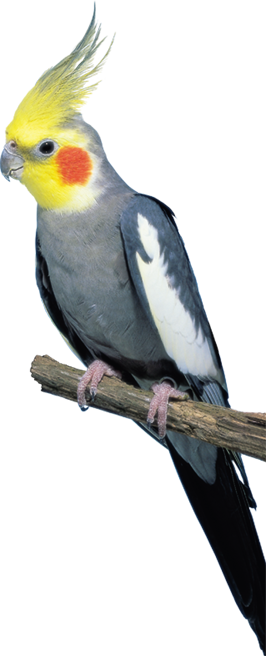Bird Care
VITAMIN A
Vitamin A is a fat soluble vitamin that needs fat for its absorption and use within the body. Vitamin A is supplied in the diet in various forms.
Sources of Vitamin A (see Table 1)
Beta-carotene, the pigment that gives vegetables such as sweet potatoes and carrots their colour, is the most important dietary source of vitamin A. Beta-carotene can be converted by the body into the active form of Vitamin A. Many vegetables are a good source of beta-carotene, especially leafy green vegetables, and those with red or orange coloured flesh e.g. capsicum, chilli peppers, broccoli leaves and flowers, carrots, sweet potatoes, turnip leaves, endive, beets, dandelion greens and spinach. Some vegetables require cooking before feeding to birds to make them more digestible, however overcooking of vegetables can lower their vitamin content.
Some fruits, such as peaches, apricots, cherries, nectarines, cantaloupe and papaya are also useful sources of dietary vitamin A. Most seeds are deficient in vitamin A and its precursors. Cod liver oil is a good source of vitamin A, and is often used by breeders as a supplement. Because it rapidly becomes rancid on exposure to the air, care must be taken when using cod liver oil to ensure it is stored properly and mixed with something that the birds will consume completely within about 15 minutes.
Table 1. Foods containing high levels of vitamin A or precursors:
| Food | IU/100g as fed |
|---|---|
| Beet greens | 600 |
| Carrots | 11,000 |
| Dandelions | 14,000 |
| Spinach | 8,000 |
| Sweet potato | 9,000 |
| Turnip greens | 7,500 |
| Dried red peppers | 77,000 |
| Beef liver | 45,000 |
| Egg yolks | 3,000 |
Signs of Vitamin A Deficiency
Pet birds fed a diet deficient in vitamin A over a long period of time may develop signs of vitamin A deficiency. In psittacines, Vitamin A deficiency is often associated with overfeeding of sunflower seeds and peanuts. Large hook bill parrots, such as Amazon and African greys, are particularly susceptible.
One of the earliest signs of vitamin A deficiency is night blindness. This is caused by a degeneration of the rods of the retina. Other signs of deficiency are caused by damage to the mucous membranes that line and protect the respiratory, reproductive and digestive tracts. These include increased susceptibility to respiratory infections, kidney disease, oral abscesses, decreased hatchability of eggs and high hatching mortality. The eyes may become swollen and weepy. Inflammation and abscess material may accumulate around the eye, and white plaques may be visible inside the mouth. Birds generally die from secondary infections caused by the weakened immune resistance as a result of the vitamin A deficiency rather than from the deficiency itself.
Effects of Excess Vitamin A
Unused fat soluble vitamins are not eliminated from the body, but stored, mainly in the liver. Vitamin A is readily stored in the body, so over-supplementation with cod liver oil or pre-formed vitamin A powder is potentially dangerous to your birds' health. You must be very careful when giving supplements to birds on a complete diet, as the diet may already contain adequate levels of vitamins and minerals. Check with your vet if you are not sure whether your birds need supplements.
Some medications, such as tetracycline, have been shown to induce vitamin A toxicity at lower dietary levels in some birds. Poor liver function can also lead to vitamin A toxicity at low levels.
Feeding foods rich in beta-carotenes will not cause an overdose of vitamin A, as beta-carotenes are only converted into vitamin A when required by the body. However conversion of beta-carotene into vitamin A requires adequate amounts of other nutrients, and birds with a vitamin A deficiency may also be low in these other essential nutrients. Feeding large amounts of beta-carotene can result in temporary yellow or orange coloration of the skin and fat, without ill effects.
